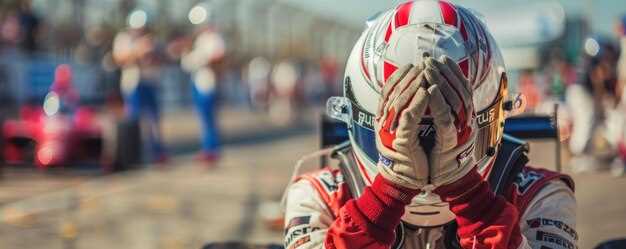
The world of motorsport is rich with history, offering a plethora of events that have shaped the racing culture we know today. For fans eager to deepen their appreciation of this thrilling sport, understanding key vintage racing events is essential. These events not only showcase the evolution of technology and competition but also celebrate the passion and spirit of the motorsport community.
From iconic races that have captivated audiences for decades to legendary drivers who have left an indelible mark on the sport, each event tells a unique story. Whether you’re a new enthusiast or a seasoned aficionado, familiarizing yourself with the foremost historic racing events will enrich your viewing experience and provide insight into the rich tapestry of motorsport. In this article, we will explore some must-know historic motorsport events that every fan should celebrate and cherish.
The Significance of the Mille Miglia in Vintage Racing History

The Mille Miglia, a historic road race established in 1927, holds a crucial place in the annals of vintage racing. Spanning approximately 1,000 miles through the scenic landscapes of Italy, this event not only tested the endurance of drivers but also celebrated the engineering prowess of period automobiles. Its unique blend of speed, skill, and strategy has made it a significant milestone in the world of racing.
This storied race attracted renowned manufacturers like Ferrari, Maserati, and Alfa Romeo, who pushed the boundaries of innovation to secure victory. As a result, the Mille Miglia became a platform for showcasing advanced automotive technology, influencing design and performance standards for years to come. The spirit of competition seen in vintage years fostered a sense of camaraderie among teams, which still resonates today.
Furthermore, the Mille Miglia’s impact extends beyond the racetrack. It has become a symbol of automotive heritage, drawing enthusiasts and collectors who revere the classic cars associated with the event. Many iconic models were either built for or gained legendary status through their participation, solidifying the Mille Miglia’s legacy within the vintage racing community.
The race’s dramatic routes and picturesque scenery have also attracted a broader audience, elevating the popularity of motor racing as a whole. Today, the Mille Miglia is not just a race; it is a celebration of history, passion, and the unyielding pursuit of speed that defines vintage motorsport.
Key Lessons from the Le Mans 24 Hours Over the Decades
The Le Mans 24 Hours has been a cornerstone of motorsport since its inception in 1923, showcasing endurance racing at its finest. One significant lesson from this historic event is the importance of adaptability. Teams must continuously innovate and adjust strategies based on changing track conditions, weather, and competition.
Another critical aspect is the value of teamwork. Successful endurance racing requires seamless coordination among drivers, engineers, and support staff. The ability to communicate effectively and work together can often mean the difference between victory and defeat.
Durability is paramount; vehicles must not only be fast but also resilient to endure the grueling 24-hour race. Lessons learned about aerodynamics, tire management, and fuel efficiency from past races have influenced vehicle design across all motorsport disciplines.
Moreover, the Le Mans experience highlights the significance of mental resilience. Drivers face physical exhaustion and psychological pressure throughout the race. The ability to maintain focus and decision-making under stress is crucial for success.
Lastly, historical events at Le Mans teach us about the inevitable evolution of technology in motorsport. Each decade has brought advancements that redefine racing strategies, from the introduction of hybrid technologies to advancements in safety protocols. This continuous progression shapes the future of racing and challenges teams to stay ahead of the curve.
How the Goodwood Revival Celebrates Classic Motorsport Culture

The Goodwood Revival is a premier historic motorsport event held annually in West Sussex, England, dedicated to celebrating the golden age of racing. This unique gathering allows enthusiasts to immerse themselves in vintage automobiles and the rich culture surrounding classic motorsport. With participants donning period costumes, the Revival transports visitors back to the 1940s, 1950s, and 1960s, creating an authentic atmosphere that honors its historic roots.
One of the highlights of the Goodwood Revival is the wide array of competitive races featuring iconic vehicles, from classic Formula One cars to vintage sports prototypes. These events not only showcase the engineering prowess of the past but also emphasize the craftsmanship and design that defined an era of motorsport that many fans cherish. Spectators can witness thrilling wheel-to-wheel action, reminiscent of a time when racing was as much about style as it was about speed.
In addition to the thrilling races, the event presents an impressive display of classic cars, allowing fans to admire spectacular vintage machinery up close. This celebration of automotive history is complemented by various showcases, including classic aircraft and even period-inspired entertainment, ensuring that the spirit of classic motorsport is vividly alive throughout the weekend.
The Goodwood Revival not only honors the achievements of the past but also fosters a community of classic car enthusiasts. By gathering fans, collectors, and historians, it provides a platform for sharing stories and celebrating the legacy of motorsport. As a result, the Revival ensures that the passion for vintage racing continues to thrive, inspiring future generations of motorsport aficionados.



